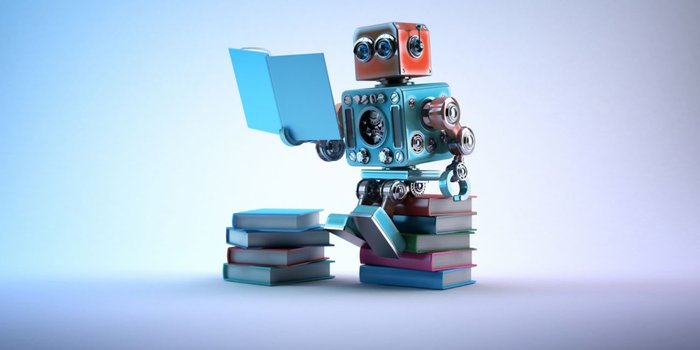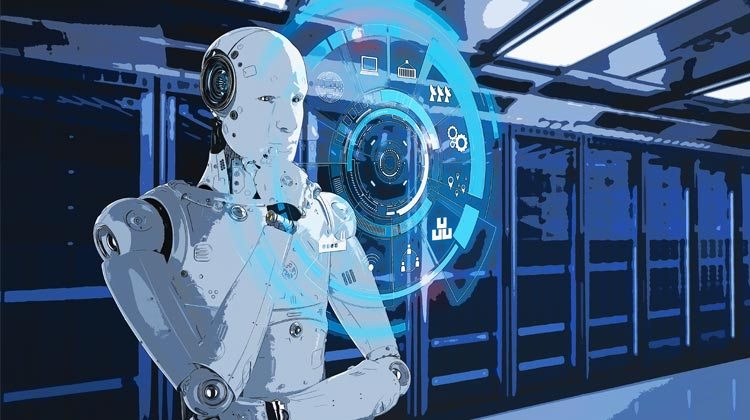Machine learning and its value in healthcare
Machine Learning (ML) is the teaching of actions and activities to computers and robots whose goal is machine learning. This leads to the possession of a large amount of data thanks to which the healthcare sector manages to achieve better results in terms of performance and efficiency.
According to consultancy firm McKinsey & Company, these big data could create a value of 100 billion dollars a year in the medical and pharmaceutical sectors
There are several areas of application of Machine Learning in the health sector: here is a presentation that lists the main characteristics of each one.
1. Diagnosis of the disease
The first application of Machine Learning concerns the diagnosis of diseases and the identification of treatments. According to a 2015 research published by the Pharmaceutical Research and Manufacturers of America, more than 800 useful drugs for cancer treatment have been put on trial.

This represents the need to devise new methods of diagnosing and treating diseases, a process that many organizations have already begun, such as:
- IBM Watson Health in cooperation with Quest Diagnostic launched an initiative in 2016 with the aim of advancing methodologies using cognitive computation.
- The Boston-based Berg company, which works in the biopharmaceutical sector, is using Machine Language and artificial intelligence to improve diagnosis and therapy services in various medical fields, including oncology.
- DeepMind Health from Google, which involves collaborations with the United Kingdom in order to identify tools against macular degeneration.
- In the area of brain diseases such as depression, the P1vital project of Oxford University’s Predicting Depression Treatment Response (PReDicT) is using predictive analysis to help diagnose and provide care, with the overall goal of producing a battery of emotional tests commercially available for use in clinical settings.
2. Personalized medicine
The goal is to address the health problems of users to solve them in the most appropriate way for each person, measuring the risks that vary from case to case.
Identification of therapies and treatments tailored to the patient
The personalization of the treatments is important for the sector as it leads to a reduction in the total costs of the services, given that each customer will adhere to the plan identified and prescribed for him.
IBM Watson Oncology is an organization dedicated to directing decisions on therapies through the use of patient data and medical information. This data in the near future will represent the primary source of the creation of sophisticated and avant-garde personalized treatments.
This transformation also affects many companies that deal with providing solutions to various health problems: this is the case of Somatix, which offers technologies for the analysis of data for a better understanding of behaviors with the aim of making individuals quit smoking, and SkinVision, which instead deals with the prevention of cutaneous melanoma and sends images taken by the camera of the mobile phone to specialized dermatologists waiting for their analysis.
3. Production of drugs
The ML has a very important utility as far as the identification of new drugs is concerned, starting from the study of the composition up to predicting its effects.
The Royal Society based in the UK states that Machine Learning is an optimal solution also in the production of drugs through biological methods: in this way, the pharmaceutical companies are important helpers in the drug production process, especially as regards timing and lowering of production costs.
As far as this application is concerned, the category being studied is precision medicine which finds its main actor in the MIT Clinical Machine Learning Group, which uses algorithms to identify the best ways to produce drugs and cures especially referring to diabetes.
A further example is given by the Hanover project by Microsoft that uses Machine Learning in various cases, especially in technologies for therapies aimed at treating cancer and more specifically in the identification of personalized treatments for acute myeloid leukemia.
4. Conducting clinical tests
The application of machine learning also finds fertile ground in research on clinical tests. In particular, though it is possible to identify potential experimenters among patients interested in health treatment, relying on a greater number of data and information relating to these users thanks to predictive analysis.
But the ML can also be used to monitor data remotely and access them in real time to ensure certain security in the treatment, as well as for many other aspects, as McKinsey & Company always underlines.
5. Radiotherapy and radiology
The Dr. Ziad Obermeyer of Harvard Medical School in a 2016 interview he said that in the near future, radiologists will be replaced by cyborgs and robots that will replace the work of medical professionals involved. This replacement will guarantee faster and more efficient data processing thanks to the use of algorithms.
From the collaboration between Google’s DeepMind Health and the University College London Hospital are the first attempts to develop these algorithms, whose functionalities allow to choose with greater care radiotherapy treatments thanks to the study of tissues affected by cancer cells.
6. Electronic data collection
Another feature of Machine Learning is that of electronic data collection, using supports that detect the characters and machines that use the vector. This is the case of tools such as the Google Cloud Vision API and MATLAB, which recognize the spelling and written words.

An example of the implementation of these elements is still given by the MIT Clinical Machine Learning Group which through the use of ML is creating digital medical records of patients who collect personal information and diagnostic data.
7. Forecast of epidemics
Machine Learning can also be used to predict epidemics in all areas of the world, through the collection of data available via satellite detection and many other resources.
Already various forecasting tools have been used to monitor, for example, cases of malaria, through the collection of data regarding temperatures, meteorological aspects and cases of infection.
The outbreak forecast could be of vital importance especially for third world countries where health care is not yet optimal and efficient as there are no facilities and resources.
There is a program that offers a reading of the disease situation, namely Pro-MED, which monitors the progress of epidemics in real time: this software is used by HealthMap to process data on the same topic.
Application barriers
The application of the ML finds several obstacles in the medical and pharmaceutical sectors which unfortunately do not allow it to be carried out. These are challenges to be overcome to be able to enjoy the full potential of Machine Learning, which are:
- The difficulty of accessing medical data, still too “private” and usable with difficulties for studies. Too few patients consent to the use of information concerning them, concerned about the privacy problem. According to a 2016 research by the Wellcome Foundation in the UK, however, only 17% of the sample would not agree to make their data available (in anonymous form) for research;
- The need for more visible and crystalline algorithms, in order to comply with the regulations of the pharmaceutical sector;
- An important need is a need for professionals in the sector to create a collaboration team with different and complementary skills;
- Replace data silos by focusing on data sharing in order to improve searches, important in any sector
- The request to make electronic records that are too complicated and poorly ordered due to the use of databases is less complex.







